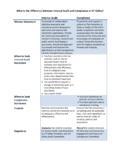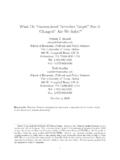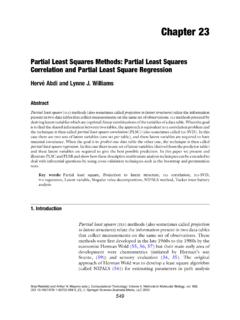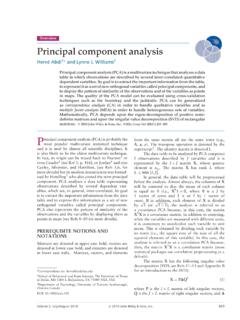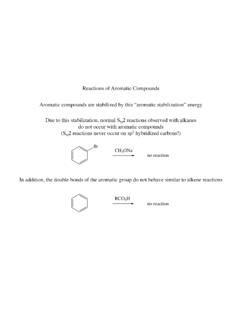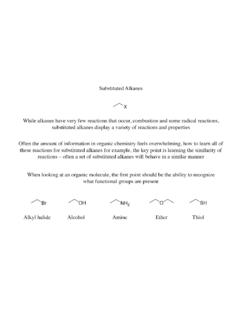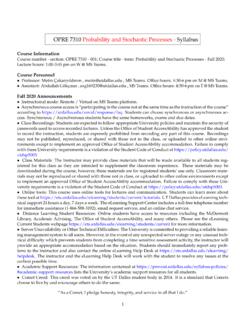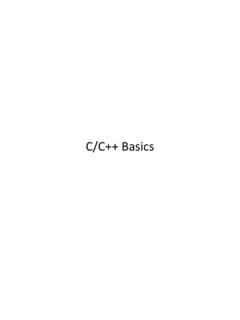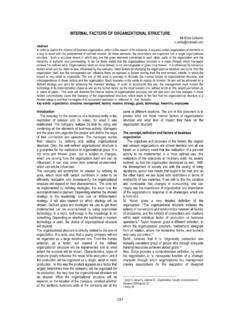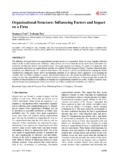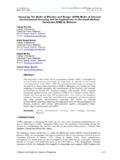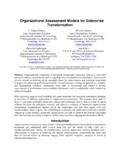Transcription of Promotion Systems and Organizational Performance: A ...
1 Computational & Mathematical Organization Theory 7, 207 232, 2001 Kluwer Academic Publishers. Manufactured in The Systems and Organizational Performance: A Contingency ModelSTEVEN E. PHELAN AND ZHIANG LINS chool of Management, University of Texas at Dallas, Richardson, TX 75083-0688email: study explores the Organizational impact of a variety of important Promotion Systems commonly practicedin organizations including up-or-out Systems , absolute merit-based Systems , relative merit-based Systems , andseniority-based Systems . Through the computer simulation of organizations in a distributed decision making setting,the results indicate that the effectiveness of any Promotion system is dependent on a range of factors including thenature of the task environment, the design of the Organizational structure, the frequency of monitoring, the criteriaof performance , and the transferability of task knowledge. This study has implications not only for understandingorganizational Promotion Systems from the contingency perspective, but also for bridging the fields of strategichuman resource management and computational organization : Promotion Systems , Organizational performance , computer simulation, contingency perspectivePromotion Systems and Organizational performance : A Contingency ModelPromotion Systems affect almost all aspects of Organizational lives.
2 This is particularlyevident from studies of human resource management (HRM) (Fuller and Huber, 1998) andinternal labor markets (Baker and Holmstrom, 1995; Barron and Loewenstein, 1985), toname a few. Given the importance of Promotion Systems in organizations, it is surprisingthat few studies have attempted to examine the role of various environmental, organizationaland job factors on the effectiveness of Promotion Systems (Allen, 1997; Ferris et al., 1992).This study attempts to fill some of the void and explore the Organizational impact of a varietyof important Promotion Systems commonly practiced in organizations including up-or-outsystems, absolute merit-based Systems , relative merit-based Systems , and seniority-basedsystems. The Systems are tested under a wide variety of conditions and the contribution ofeach Promotion system to the performance of an organization on a simulated radar detectiontask is compared.
3 factors considered include: the nature of the task environment, individ-ual capabilities, Organizational structure, monitoring frequency, performance criteria, andtransferability of knowledge. The use of a computational model allows a wide range ofcontingencies to be systematically paper begins with a discussion of previous research on this topic and the theoreticalrationale for the study. This is followed by a discussion of the various types of promo-tion Systems and the factors that may mitigate the performance of those Systems . Inter-spersed in this discussion in the generation of hypotheses for the subsequent computational208 PHELAN AND LINexperiments. The following section of the paper discusses the computational model used inthe study and the method of operationalizing the variables discussed in the theory results of the experiments are presented followed by a discussion of the results Background and HypothesesTraditionally, students of human resource management (HRM) have placed the study ofpromotion and recruitment under the rubric of employee selection (Fuller and Huber, 1998).
4 Selection is the process of matching workers to jobs to maximize Organizational produc-tivity and performance . Promotion and recruitment are linked because the HR practitioneris supposedly indifferent to whether that candidate is recruited from inside or outside theorganization. However, Promotion proves to be the more pervasive phenomenon. Empiri-cal studies reveal that around 75% of vacancies arefilled by promotions from within theorganization (Baker et al., 1994; Chan, 1996; Lazear, 1992; Wholey, 1985).According to labor economists, internal labor markets are favored because managerstypically have better information about an employee s ability, motivation, and performance (Baker and Holmstrom, 1995; Barron and Loewenstein, 1985; Wholey, 1985). Internalcandidates may also have developed specific skills not readily available in the externalmarket (Gibbons and Waldman, 1999).While the reliance on an internal labor market is characteristic of most organizations,there is considerable variation in the mechanisms used to select candidates for , professional servicefirms, and the military often use up-or-out models ofpromotion, where junior employees must make the grade within a specified period oftime or exit the organization (O Flaherty and Siow, 1995; Waldman, 1990).
5 Many otherorganizations rely on some form of merit or rank-order system , where those receiving thehighest performance evaluations in a given cohort are promoted while those missing thecut remain at their current level (Lazear and Rosen, 1981). Seniority has also been widelyused as a basis for Promotion in many industries (particularly in public administration) buthas fallen from favor in recent years (Dobson, 1988; Mills, 1985). Organizational economists assume that persistent variations in Organizational practicemust reflect efficient adaptations to local conditions and constraints (Milgrom and Roberts,1992). Thus, the military and academic use up-or-out Promotion Systems because they arethe most efficient vehicles for the type of environment in which these organizations often seek to justify why one (seemingly inefficient) mode of organization areactually more efficient in a particular efficiency viewpoint is consistent withcontingency theorythat argues that one bestpractice does notfit all.
6 Organizations must continually adapt their practices to environmen-tal realities to improve performance (Lawrence and Lorsch, 1967). Contingency theory goesbeyond the economist s quest for understanding in seeking to provide normative guidancefor managers on how to adjust Organizational parameters to cope with changing environ-mental the pervasiveness of Promotion Systems in Organizational life, it is disappointing tonote that only a few studies have attempted to describe the effect of various environmental, Promotion Systems AND Organizational PERFORMANCE209organizational and job factors on the characteristics of Promotion Systems (Allen, 1997;Ferris et al., 1992). Ferris et al. (1992) developed a comprehensive model of antecedentand outcomes of Promotion Systems . Surveys were used to collect data on antecedentfactors such as industry type, degree of centralization and formalization,firm size, strat-egy, and degree of unionization.
7 The survey tool also collected information on outcomes,including factors such as return on investment, turnover, and the perceived fairness ofthe system . The type of Promotion system in a company was determined from foursurvey responses: whether the company had a) a Promotion from within philosophy,b) a time-in-grade requirement, c) a fast track Promotion system , and d) a limitations of this approach become readily apparent when we consider thatFerris et al. (1992) received only 41 usable responses from 347 mailings to companiesin four industries. A follow-up survey by Allen (1997) utilizing the same model receivedusable data from only 74 of 284 mailings across nine industry groups. Given low statisti-cal power, only a few significant correlations were found and results were frequently notreplicated between the two studies. For instance, one interesting result in the Ferris et al.
8 (1992) paper was a reported correlation between return on sales and the use of ability andprior performance as Promotion criteria The result was not replicated in the Allen (1997)follow-up study. Neither paper provided descriptive statistics or correlation matrices lack of research in this area creates several problems for organizations. First, there isno way of knowing if current practices are the most efficient set of arrangements. Firms maybe satisficing rather than maximizing performance but a fear of failure prevents experimen-tation with alternate Promotion Systems . Secondly,firms in new industries, or facing newconditions, have little guidance in the selection of a Promotion system . Understanding thefactors that favor one system over another should lead to better outcomes than the currentreliance on tradition, habit, or current study uses a computational model to study the relationship between pro-motion Systems and Organizational performance .
9 A computational approach allows us tostudy the dynamic effects of a range of factors while simultaneously controlling for extra-neous variables that make real-world comparisons difficult. Studies have shown that such amethodology can be very effective in complementing the contingency perspective (Lin andCarley, 1995; Lin and Carley, 1997).Types of Promotion SystemsA useful discussion on Promotion Systems can be found in the Organizational economicsliterature. According to economists, a Promotion system serves two fundamental purposes(Baker et al., 1988). First, it selects more able individuals for positions of greater responsi-bility (the job assignment or matching function of the Promotion system ) and, secondly, itmotivates employees at one level to strive harder to reach the next one (Lazear and Rosen,1981).In this study, we deliberately chose to model only the job assignment or matching functionof Promotion Systems .
10 We did this for three reasons:210 PHELAN AND LIN1. The incentive effect of Promotion Systems has received little or no coverage in theHRM literature. Promotion is seen as simple job assignment not as a tool for potentiallymotivating all workers (whether promoted or not).2. Motivation is extremely difficult to model. Motivation impacts productivity and turnover,waxes and wanes over an employee s tenure, andfluctuates in response to organizationalevents (such as being passed over for Promotion ). There is little reliable data concerningthe magnitude of these motivational effects. Any attempt to provide a credible modelof motivation is likely to be met with howls of derision for some perceived error ofomission or Procedural rules for Promotion are easy to model. For instance, if seniority is the basisfor Promotion , it is a simple matter to identify the most senior employee in a given cohortor group.
